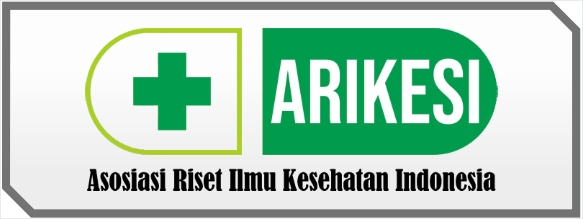Perubahan pH Saliva pada Anak Balita Stunting setelah Pemberian Kerupuk Singkong di Wilayah Kerja UPT Puskesmas Pekkae Kabupaten Barru
DOI:
https://doi.org/10.59581/diagnosa-widyakarya.v1i3.1294Keywords:
Saliva pH, Stunting, Cassava ChipsAbstract
The acidity level of saliva pH is one of the factors that influences oral health. In the context of toddlers experiencing stunting, high saliva pH acidity can increase the risk of serious oral health issues. This research aims to explore the potential impact of cassava chips consumption on changes in saliva pH in stunted toddlers. The study utilized an experimental pretest-posttest design. The research population consisted of 190 stunted toddlers in the working area of UPT Puskesmas Pekkae, Barru Regency, in May-July 2023. The sample comprised 16 stunted toddlers selected using purposive sampling. Data analysis was conducted using the Wilcoxon statistical test. The research results indicated that the consumption of cassava chips by stunted toddlers during the first four weeks resulted in a significant increase in saliva pH. There was a significant difference between saliva pH levels before and after consumption in the first week (p = 0.002), second week (p = 0.001), third week (p = 0.001), and fourth week (p = 0.001). However, in the fifth week, there was no significant change in saliva pH (p = 0.020). This means that cassava chips can increase saliva pH to a more neutral level in stunted toddlers during the first four weeks, but this change does not continue into the fifth week.
References
Ardiansyah, M. S., Orthodonsi, B., Studi, P., Gigi, K., & Kedokteran, F. (2010). Pengaruh Air Susu Ibu terhadap Derajat Keasaman ( pH ) Saliva Bayi ( In Vitro ) The Influence of Breast Milk on The Degree of Acidity ( pH ) of Saliva a Baby ( In Vitro ). Mutiara Medika, 10(2), 143.
Arum, A. P. (2018). Teknologi Pembuatan Kerupuk Berbasis Singkong Di Posdaya Muslimatan Ar-Rahman Desa Candijati Kabupaten Jember Dalam Upaya Pengentasan Kemiskinan. Warta Pengabdian, 12(2), 282. https://doi.org/10.19184/wrtp.v12i2.7802
Beck, Marry E. 2011. Ilmu Gizi dan Diet Hubungannya dengan penyakit penyakit untuk Perawat dan Dokter.Yogyakarta: Andi.
Dawes C, Wong DT. (2019). Role of saliva and salivary diagnostics in the advancement of oral health. J Dent Res. 98: 133-41.
Indriana, T. (2011). Perbedaan Laju Aliran Saliva dan pH karena Pengaruh Stimulus Kimiawi dan Mekanis. J. Kedokt Meditek, 17(44), 1–5. http://ejournal.ukrida.ac.id/ojs/
Kazakova, N. N., & Sobirov, A. A. (2021). Changes in saliva in children with comorbidities. Journal For Innovative Development in Pharmaceutical and Technical Science (JIDPTS), 4(3), 2.
Khan GJ, Javed M, Ishaq M. (2010). Effect of smoking on salivary flow rate. J Med Sci.8:221–4.
Nair UJ, Obe G, Friesen M, Goldberg MT, Bartsch H. (1992). Role of lime in the generation of reactive oxygen species from betel-quid ingredients. Environ Health Perspect. 98:203–5.
Pawlaczyk-Kamieńska, T., Borysewicz-Lewicka, M., & Batura-Gabryel, H. (2019). Salivary biomarkers and oral microbial load in relation to the dental status of adults with cystic fibrosis. Microorganisms, 7(12), 692.
Reddy MS, Naik SR, Bagga OP, Chuttani HK. (1980). Effect of chronic tobacco-betel-lime “quid” chewing on human salivary secretions. Am J Clin Nutr. 33:77–80.
Rohanawati, R. D., & Bachtiar, A. (2019). Effect of Dental and Oral Health in Under Weight Children Under Five Years of Age for Stunting Prevention: A Systematic Review. In The 5th International Conference on Public Health (pp. 209-218).
Sadida, Z. J., Indriyanti, R., & Setiawan, A. S. (2021). Does growth stunting correlate with oral health in children?: a systematic review. European Journal of Dentistry, 16(01), 32-40.
Saleh, M. (2019). Perbedaan pH Saliva Sebelum dan Sesudah Konsumsi Nasi dan Singkong pada Mahasiswa Keperawatan Gigi Poltekkes Kemenkes Makassar. Media Kesehatan Gigi: Politeknik Kesehatan Makassar, 18(2).
Siregar, F. H. (2017). Perbedaan pH Saliva Dan Kadar Glukosa Darah Sebelum dan Sesudah Mengkonsumsi Nasi Putih (oriza Sativa) dan Singkong (Manihot Esculenta Crantz) (Vol. 5, Issue January).
World Health Organization. (2019). Nutrition Landscape Information System (NLIS) country profile indicators: interpretation guide.













